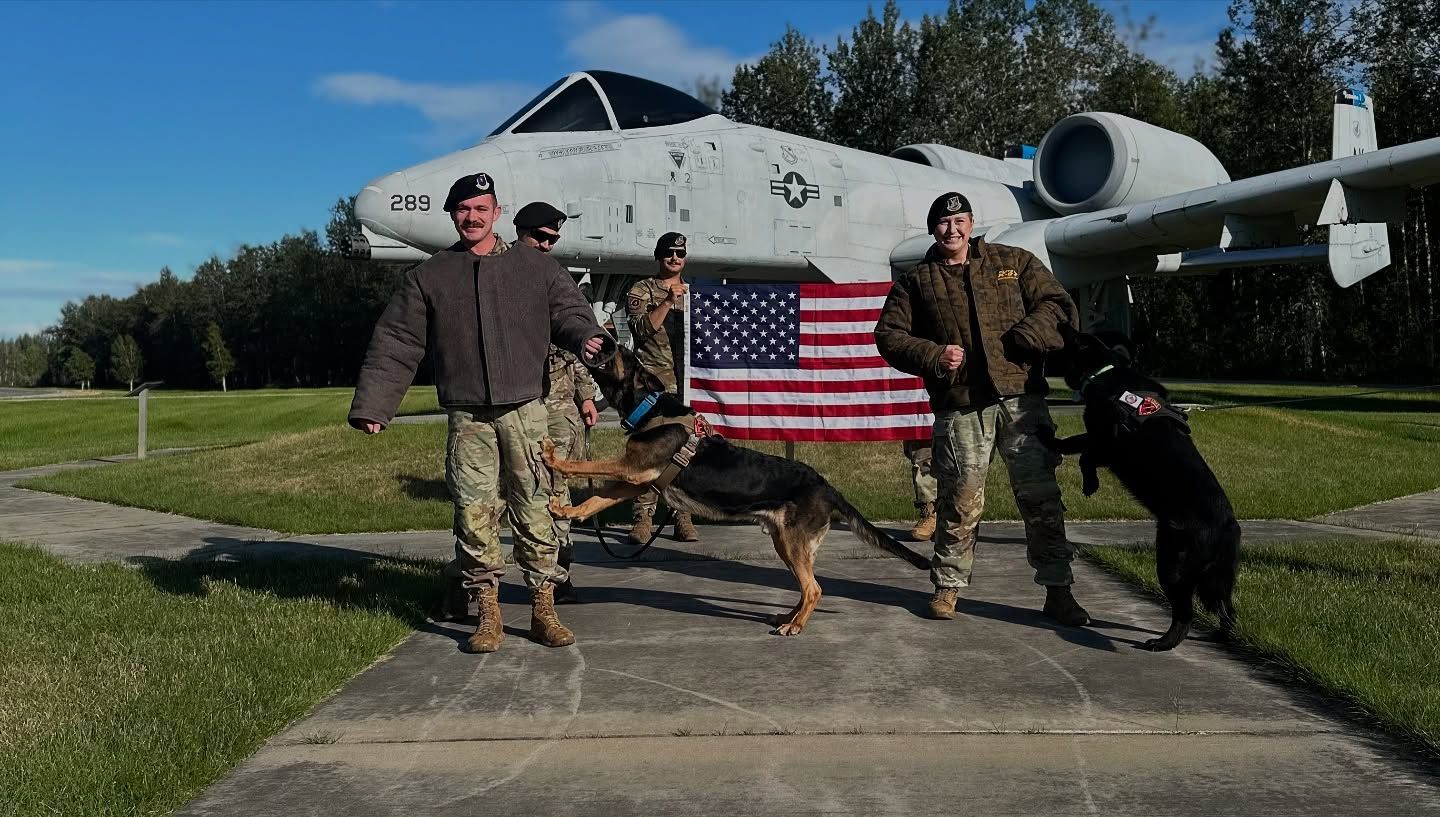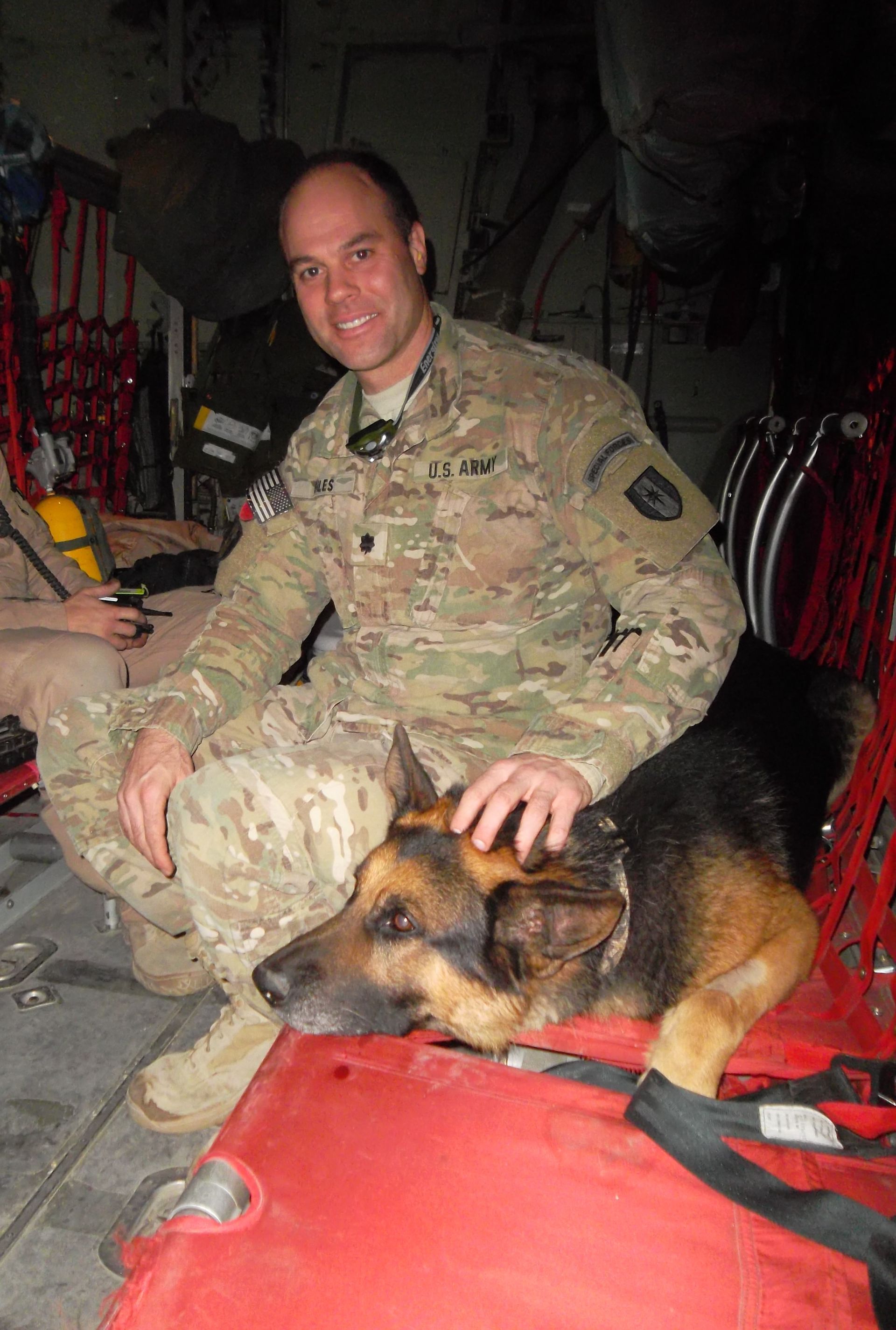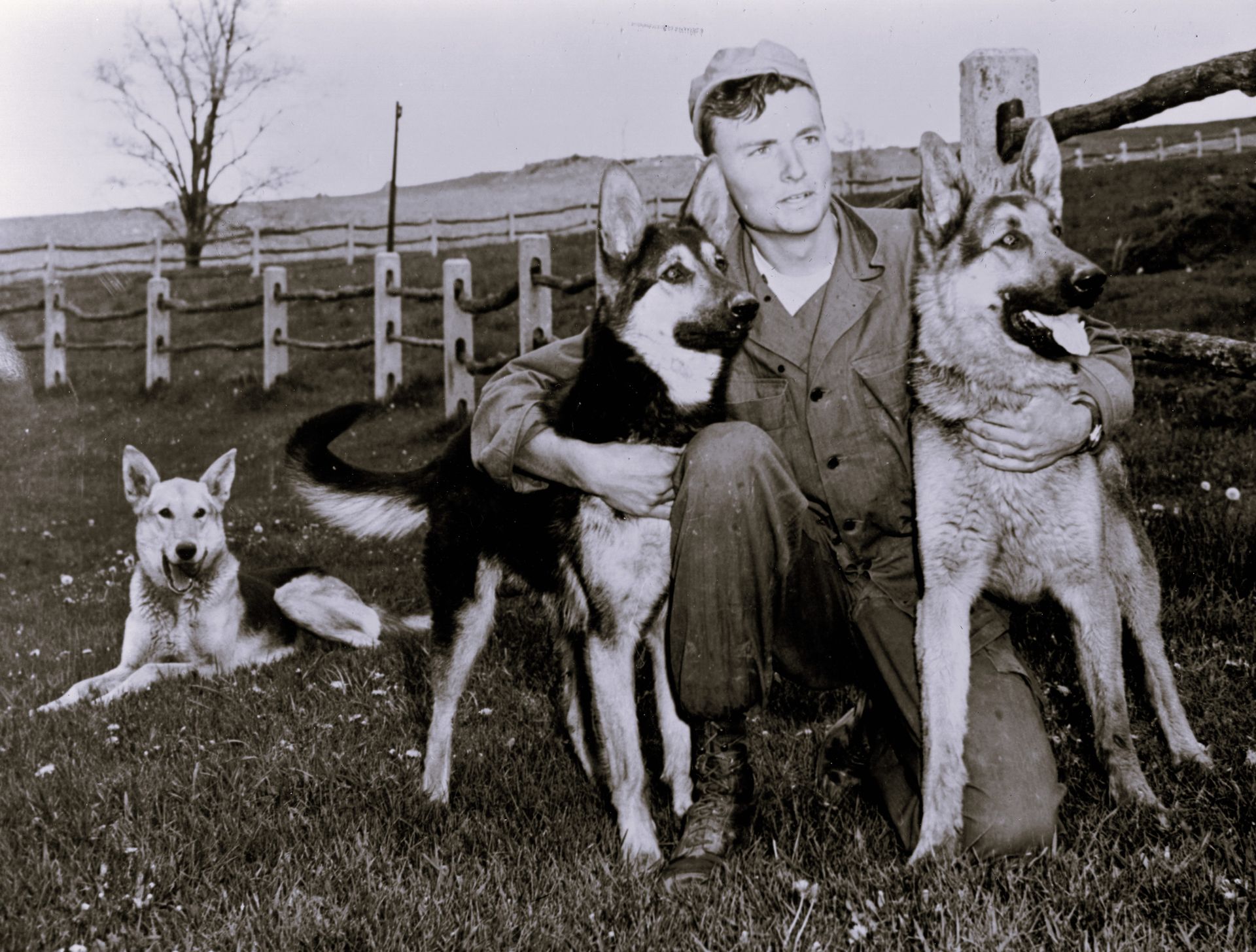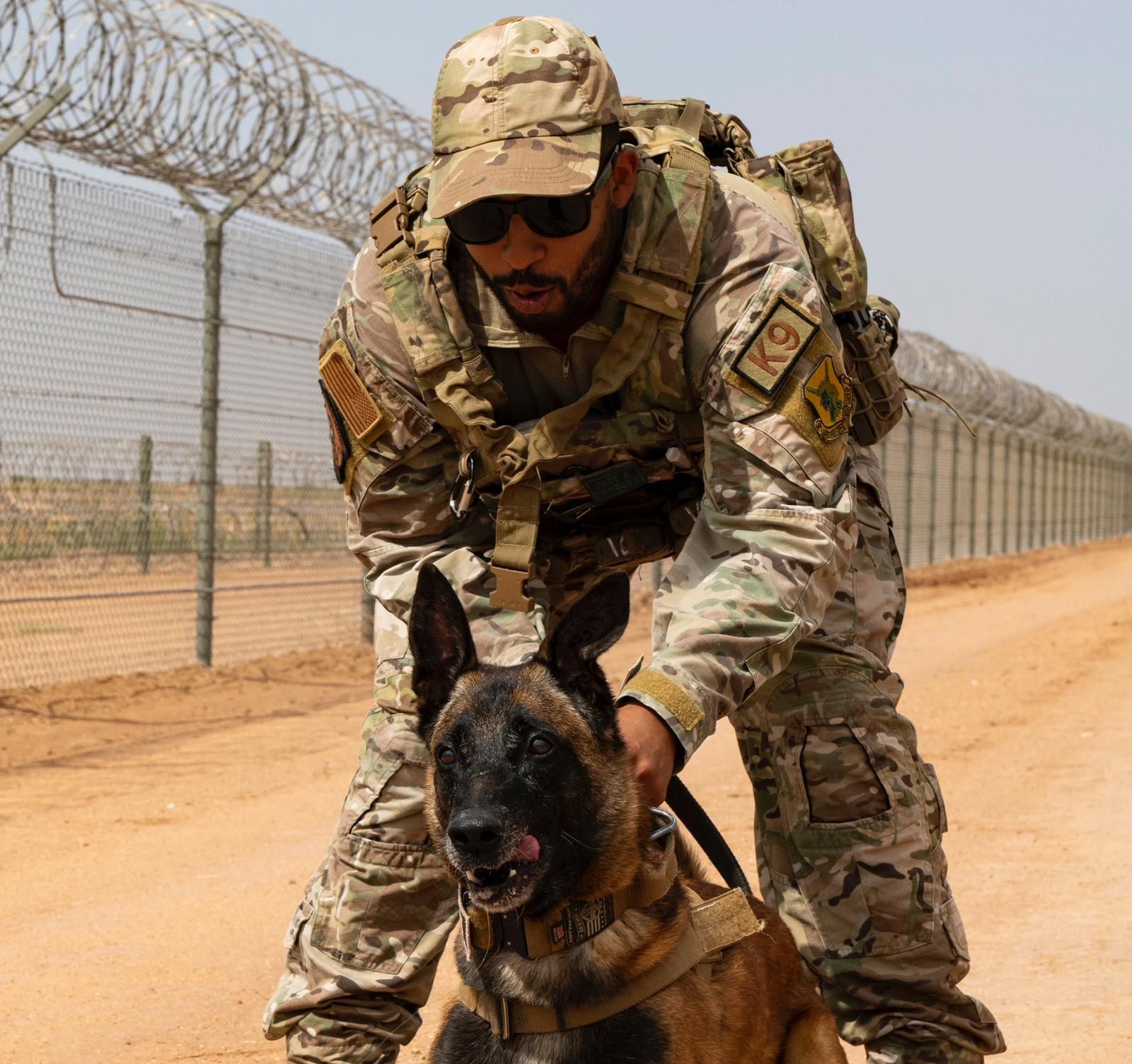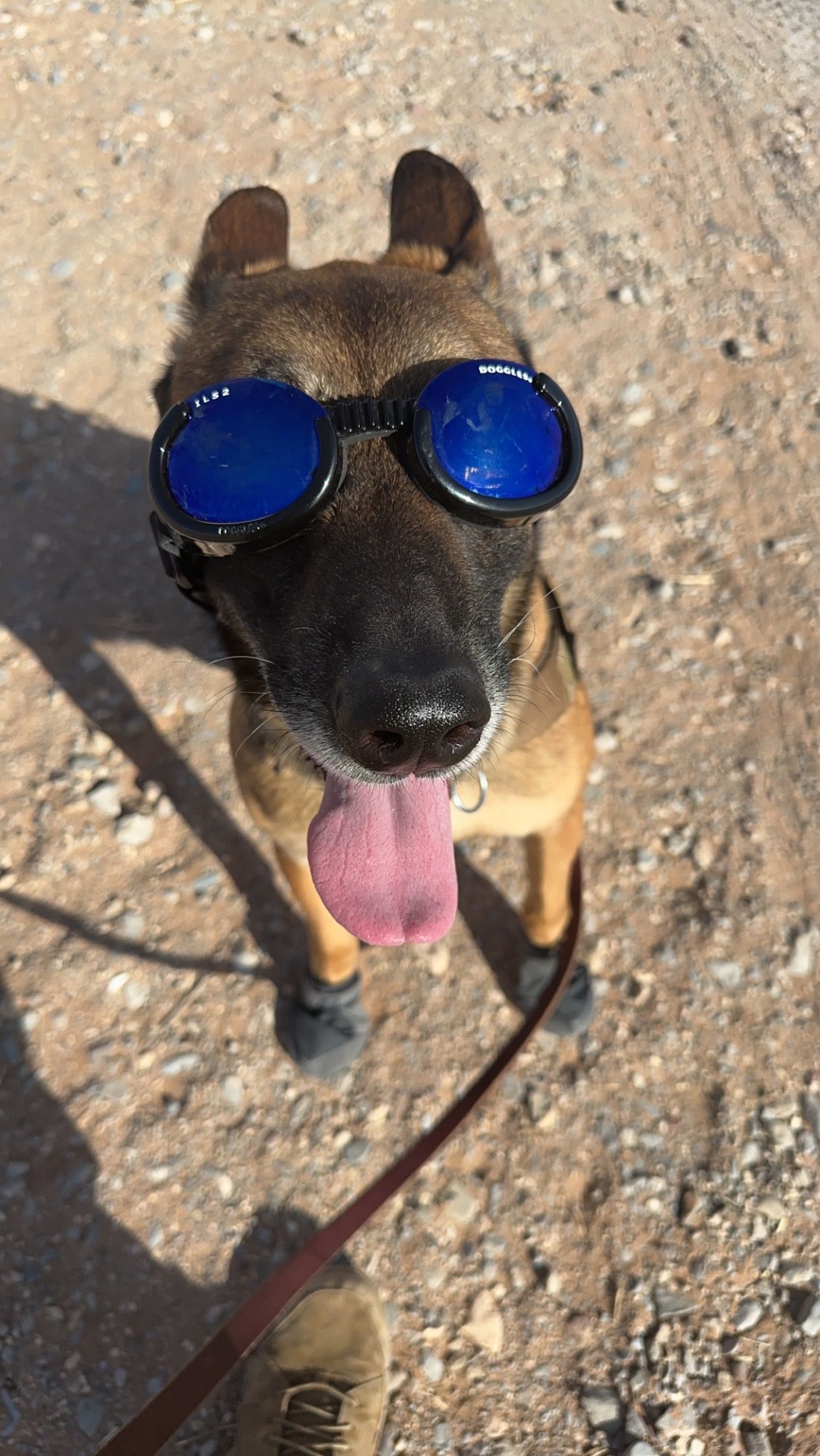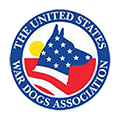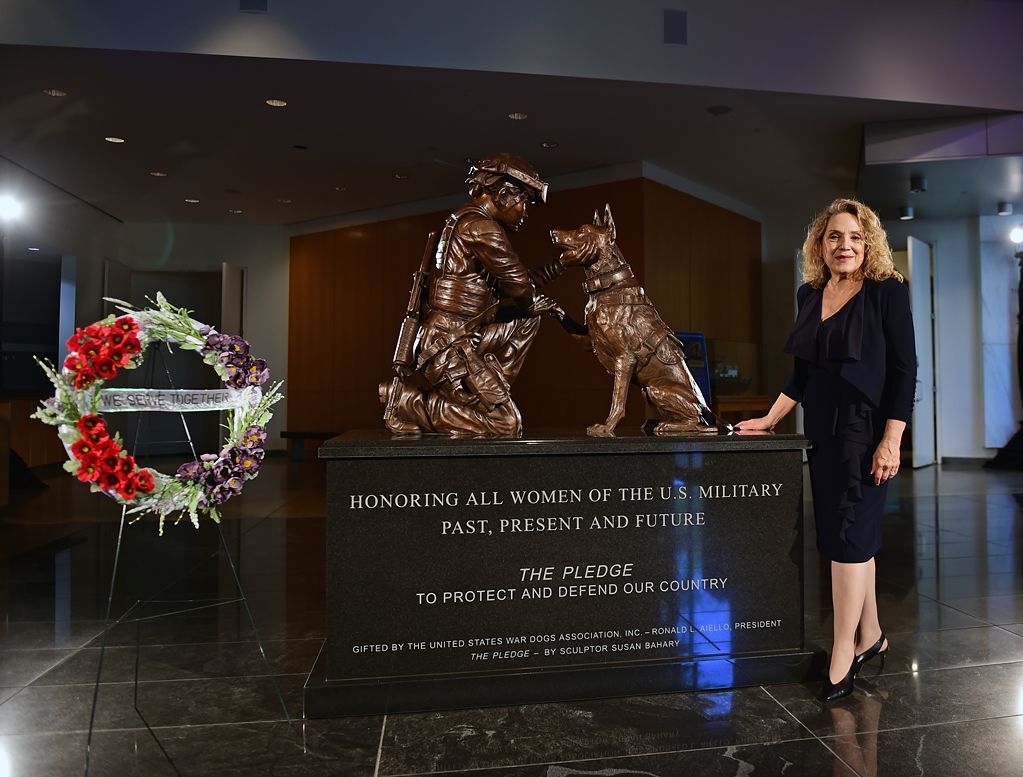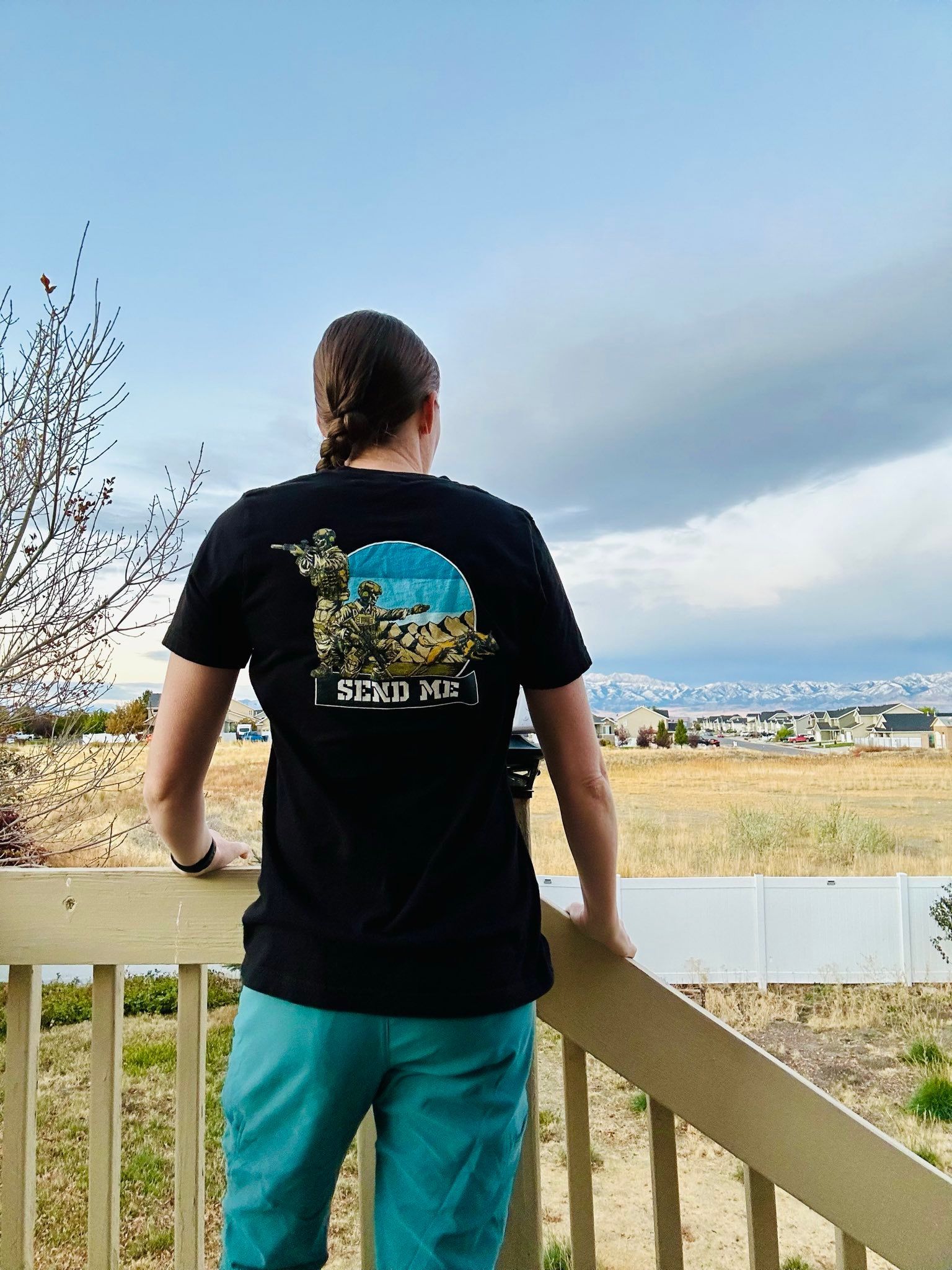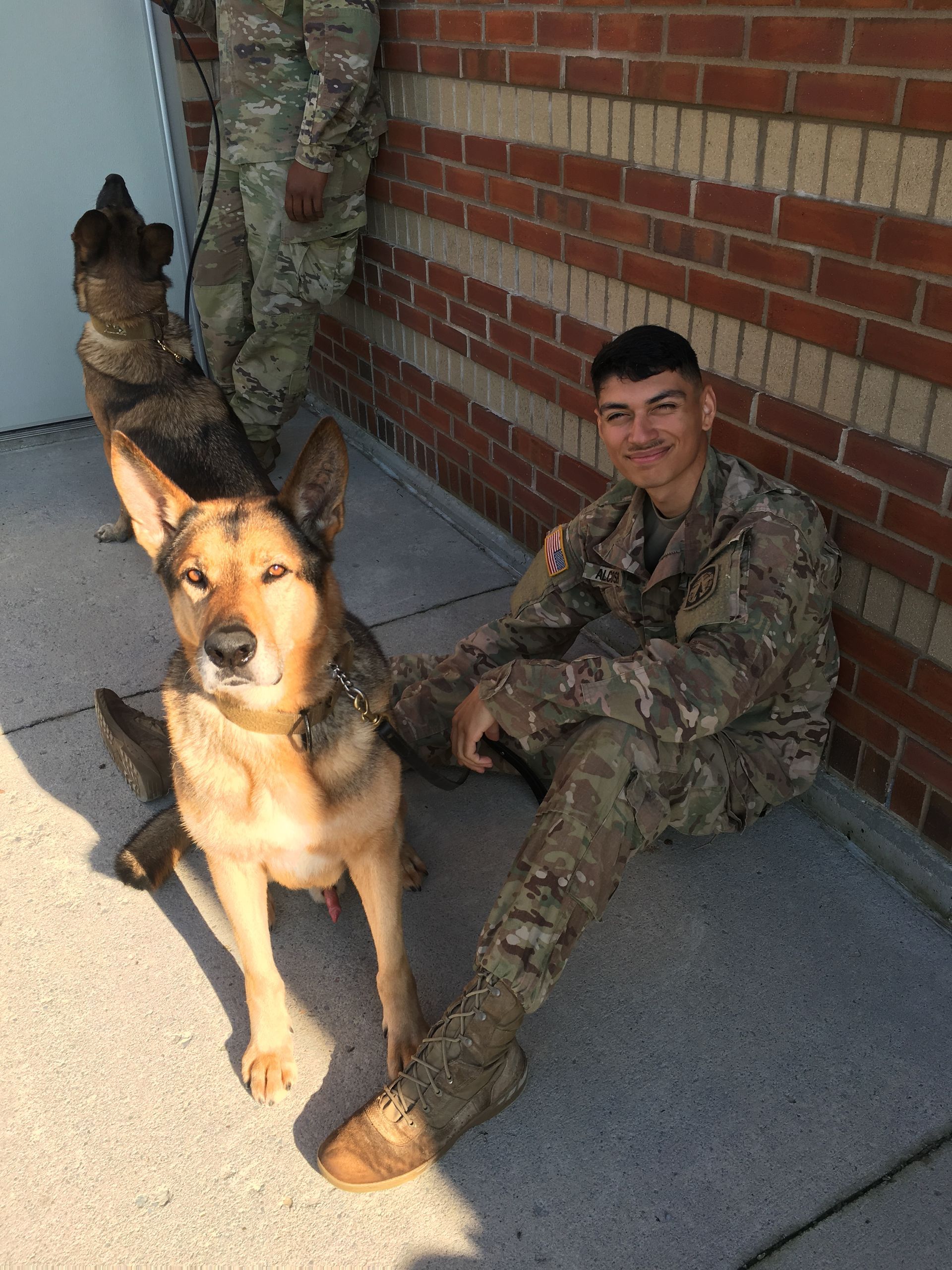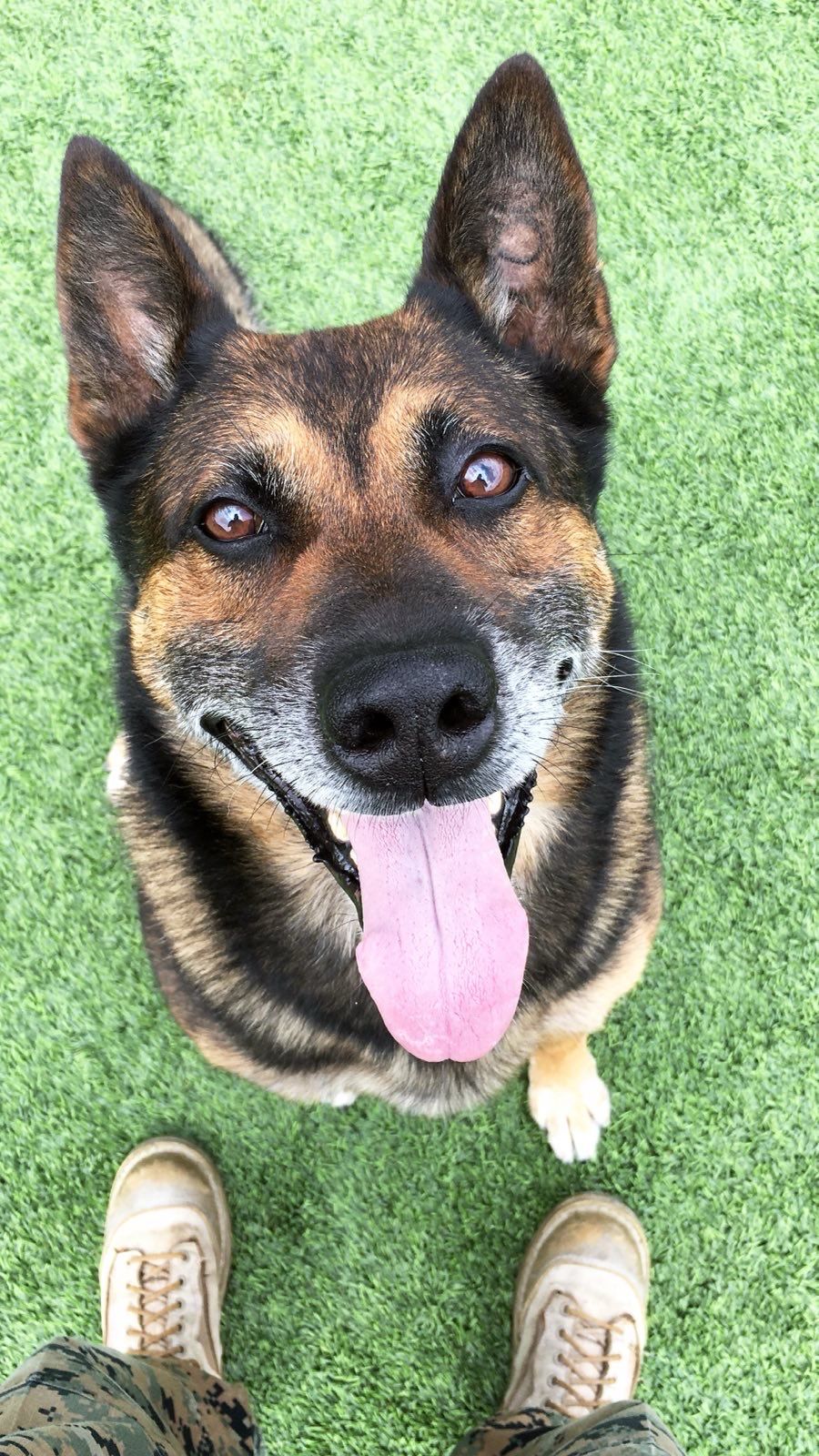
Making a Stand for K-9
When second year law student Robert Finkbeiner was drafted to join the war effort in Vietnam, he had no idea what was in store for him and the impact that his combat deployment would have on the rest of his life.
US War Dogs was honored to speak to Robert about his service and how he used his unique skillset in fierce defence of military K-9s, whose sad plight we know all-too well. Robert’s son David, reached out to us to feature his dad’s story – we are so grateful for the chance to share his experiences.
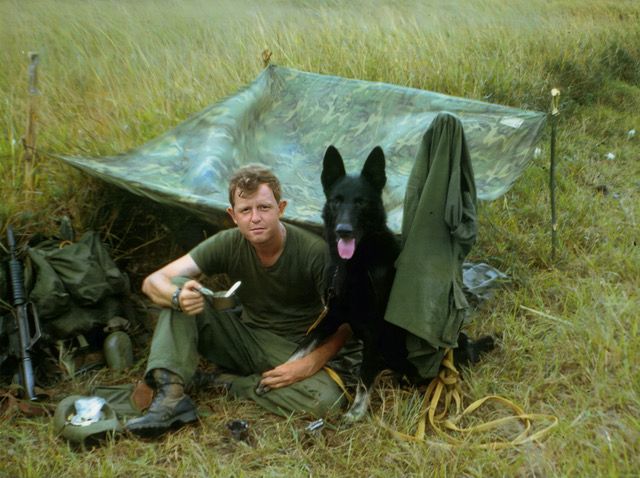
Legal Eagle to Dog Guy
At 23 years old, Robert was one of the older recruits to be drafted into the war effort. In December 1968, he was the only one of his close friends to receive the call up, pausing his law studies at the University of Iowa to be inducted as part of the US military’s build up in the Republic of South Vietnam, after the Tet Offensive. As an older draftee and halfway through his degree, Robert was offered the chance to attend Fort Benning’s United States Army Infantry School NCO course, where he specialized in military operations and intelligence. On completion of his training, he was promoted to sergeant and given orders to be a scout dog handler.
“I’d had a German Shepherd when I was in eighth grade”, explains Robert, who was born and raised in Marquette, MI, “but working with the dogs was awe-inspiring. It definitely took my levels of respect to new heights. I couldn’t help but wonder what I’d gotten myself into, to start with, but on seeing how the dogs worked, I knew I would always be safer with a K-9 by my side.”
The 12-week training course (scout dog class 3/10) readied the handlers in “day and night scouting, patrolling and outpost procedures to include helicopter orientation and search operations with scout dogs” – according to their official training documents. Following his K-9 training, Robert was recognized for his leadership and training performance with a promotion to Staff Sargeant – just 12 months after joining the military.
Robert joined the 59th Infantry Platoon Scout Dog after the platoon had suffered heavy losses of both handlers and dogs in 1969. Attached to the 11th Infantry Brigade of the American Division, his team was stationed at Landing Zone Bronco which was near the village of Duc Pho in I Corps. This is where Robert was introduced to his scout dog, Ted.
“My role meant that I had to take on scout dog missions and help with the training of dog teams in country. But the thing that struck me instantly was just how incredible these dogs were. The standard of their skills and training was outstanding. On every mission we would go on, the troops were so happy to have one of our dogs walking point. They knew they would be in capable hands.
“Ted was no exception. He was older and more experienced, having had several handlers before me. The bond we built up was instant and unbreakable – much like my fellow handlers with their dogs. The loyalty and devotion that the dog teams had to one another really was something to witness. They went everywhere together, from the mess halls to sharing bunks and walking point on missions.”
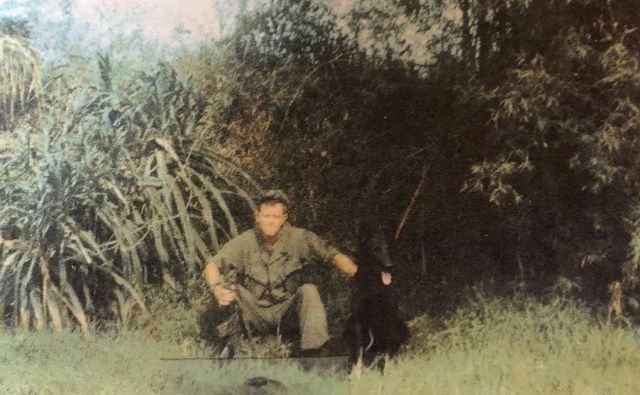
Robert and Ted on patrol in the jungles of Vietnam
The 59th
Robert recalls his time in the platoon and some of the missions that they were required to support. “When a military unit needed a scout dog team, two handlers would be helicoptered out on missions, walking point and leading groups of soldiers of varying sizes.”
The dogs were responsible for finding everything from trip wires attached to IEDs, tunnel entrances and punji sticks. They also alerted handlers to enemy forces before the enemy could detect the presence of the unit. “The unit commanders believed that the dogs senses gave the units a tactical edge – and with good reason”, explains Robert. “The dogs always stood out for their skills and ability to read the terrain. Ted’s senses were impeccable – he knew his way around way better than I did. The level of their training – being able to read voice and hand commands – never failed to impress me.”
The platoon was made up of around 40 handlers and around 46 dogs at any one time. “The colonels always wanted the dogs out in front on missions. They were battle tested and trusted with saving lives.”
During his service, Robert and Ted participated in three campaigns: The Vietnam Winter-Spring 1970 campaign, the DA Sanctuary Counteroffensive and the Vietnam Counteroffensive Phase VII campaign. “Each campaign brought with it a different approach, but all were dangerous and littered with casualties. One dog team was killed a month before they were due to go home. Another handler stepped on a booby trap – just three weeks into his tour. The first words he spoke when he came round in hospital were to assure the command that it wasn’t his dog’s fault. He lost his foot but considered himself very lucky.”
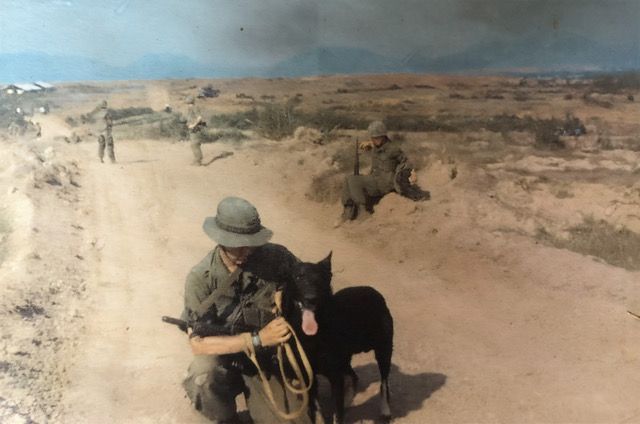
Robert and Ted
Band of Brothers
As the senior dog handler NCO of the platoon – in addition to walking point on scout dog missions – Robert also helped to maintain and sharpen training capabilities of the other handlers. “We were all incredibly close. It really was a band of brothers – the TV series is the only thing close to representing just how special the relationships were, in that environment. The dogs galvanized that sense of team spirit too, of course.
“It didn’t matter where anyone was from or what their background was. The playing field was levelled and we were all in it together. That brotherhood made you realise how lucky we were and how little we really need to survive. We had conversations and shared feelings and emotions – it changes you.
“After I got home and reflected on some of the things I saw and did, it made me realize that I could do anything. I finished school, started practicing law and set up my own business. The momentum and impetus grew, thanks to the experiences I shared with those handlers, and with Ted.”
Letter
The brotherhood and camaraderie enjoyed by the handlers in the 59th Scout Dog Platoon, moved them to take action when one of their own was killed. Dog handler Lawrence Yochum was killed alongside his scout dog, King and this tragedy solidified the platoon’s collective resolve to speak out against the fate of their MWDs, who were – in the majority of cases – handed a death sentence on completion of their service in the military.
“When Yochum and King died, we all felt the quelling of emotion to do something”, explains Robert. “One of the guys started drawing and doodling – capturing the unfairness of the situation that our MWDs found themselves in, even when some of them paid the ultimate price in combat. They were the best dogs and they deserved a retirement back in the US. Every single dog handler in the platoon wanted to take his dog home, so we came together to take some action.”
Robert, along with eight other platoon members, began drafting a letter that laid out the case of their MWDs and the changes they wanted to see to government protocols, so they could come home.
“I was good with words so I did a good portion of the writing, but we had students from Yale and Harvard in the platoon, who all wanted to help. We researched where to send the letter to gain maximum traction and exposure. People back home needed to know about the dogs and that they weren’t being permitted to come home.”
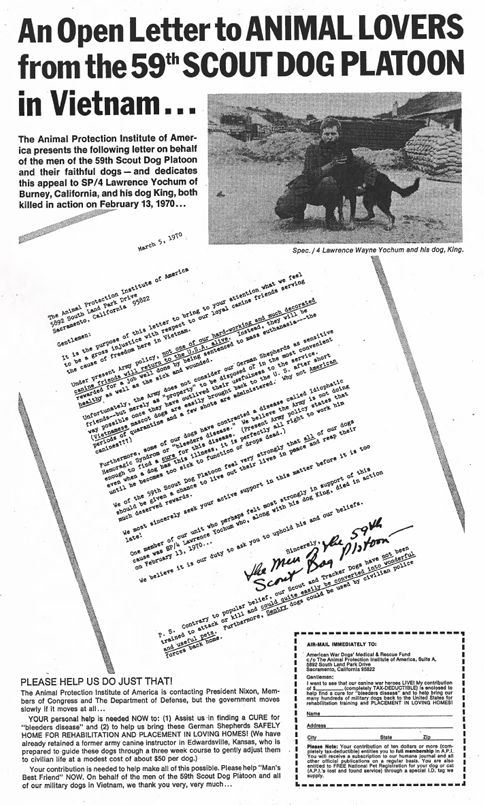
The letter penned by the 59th Scout Dog Platoon, which was published by The Animal Protection Institute of America
The platoon’s letter was printed by The Animal Protection Institute of America, to raise the profile and plight of the military dogs in Vietnam. The organization – and others like it – fought to raise profile of the injustices of America’s war dogs in the war, attempting to raise funds to bring the dogs home.
Historian Mike Lemish compiled a history of MWDs in Vietnam for US War Dogs’ website. In his article, Mike explains: “In an era before the internet, protests opposing this “no dog return policy” took the form of letter writing campaigns, calls to elected officials, and letters to newspaper editors. A couple of bills were floated in Congress but they died quietly in committee. Those involved included dog handlers, animal rights organization, and a number of concerned citizens. At the time most Americans did not even know there were military dogs in Vietnam and how many were employed.”
Public information was made available about the plight of the war dogs in Vietnam, in the hopes that it would put pressure on the government. But in an age where millions of dollars were being spent on the war effort, the dogs were seen as expendable equipment, rather than souls to cherish and return home. Lemish explains that government sought cheap options of rolling up the MWD program at the end of the war: “At one point mass euthanasia was considered but quickly dismissed. That would not fly with anyone back home if word got out. To quell the growing discontent the military adopted an appeasement policy; “medically fit” dogs would be reassigned to other locations or returned to the United States.
“Eventually about 285 dogs were able to board a “freedom bird” and leave Vietnam. Under no circumstances were civilians able to adopt the K-9 veterans. The remaining dogs would be turned over to the ARVN or euthanized for medical reasons.”
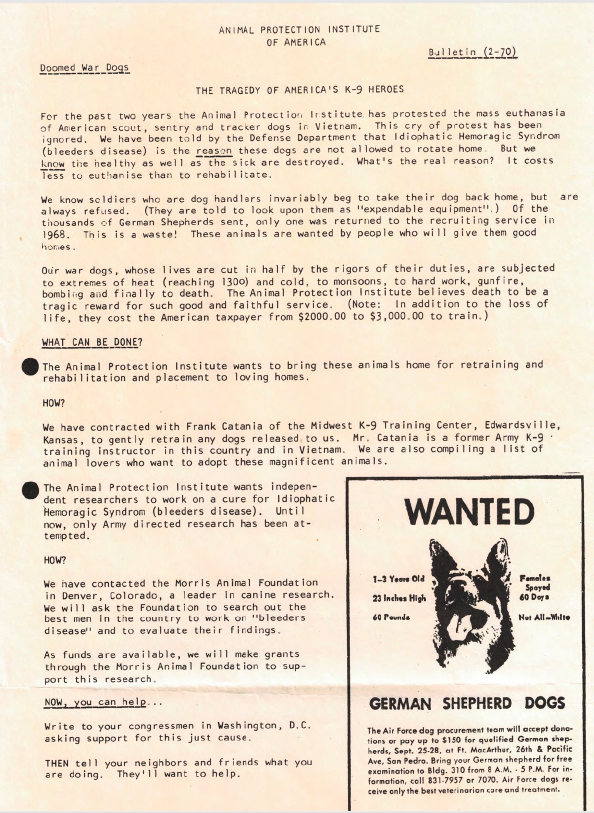
The Animal Protection Institute of America issued bulletins to inform the public of the plight of MWDs and raise money for their safe return
The troops within the 59th platoon made their best efforts to support the campaign to change the policies relating to their MWDs. “Our letter received a great response from a lot of influential people, but – try as we might – it didn’t save our dogs.”
Robert was faced with the bitter realities of the policies he had railed against, when orders came to have Ted euthanized before he left Vietnam. “He had served with several handlers and was getting older, but it was felt that I should be his last handler. I’ll never forget that day and there hasn’t been a single day that has gone by where I haven’t thought of him.”
Ted’s Legacy
Robert said a painful farewell to Ted before he left Vietnam, but his legacy lived on in his heart. “When I came home, I returned to my studies in Iowa. I printed a copy of the 59th platoon’s letter and hung it on the wall of my dorm. Everyone who read it was impacted by its contents.”
Robert’s love and respect for German Shepherds also continued back home. “Since Ted, it’s the only breed for me. I’ve had several dogs over the last five decades and I called each one of them Ted. I trained them all – just as we did with the MWDs. They could understand all the commands and it made me feel somehow connected to Ted, even all these years later.”
The resilience Robert forged with his K-9 brothers in Vietnam, served him well. He completed his studies and qualified as a trial lawyer, running his own practice in Michigan. Now retired, Robert is still closely bound to Ted and his time in Vietnam. “I don’t often speak about it – I think it’s the same for many of us who served. But the unspoken words about Ted and memories from Vietnam live in my mind daily. I think they always will.”
Grateful Thanks
The experiences of the dog handlers in Vietnam and the actions of the 59th in campaigning to change the plight of their MWDs, remains an important marker in history. US War Dogs president, Chris Willingham, commented: “We are honored to be able to share Robert’s story and highlight the service and sacrifices of K-9 during the Vietnam era. The military K-9 family will never forget the experiences of our Vietnam brothers and the dogs they worked so seamlessly with. To honor the past will help us to change the future, and the legacy of dogs like Ted is born out through organizations like US War Dogs, whose mission is to honor the role of K-9s, past, present and future.
“Thank you, Robert, for allowing us to share your story.”
During those campaigns, Robert earned the medal he was most proud of, his Combat Infantryman Badge. He also earned an Army Commendation Medal for Meritorious Services during his time in the Republic of Vietnam.
Robert was recognized for his hard work and leadership in the platoon and was awarded the Bronze Star Medal and subsequent oak leaf cluster for meritorious achievement in ground operations against hostile forces, in the Republic of Vietnam during 1970.
Thank you Robert, and Ted, for your service.
